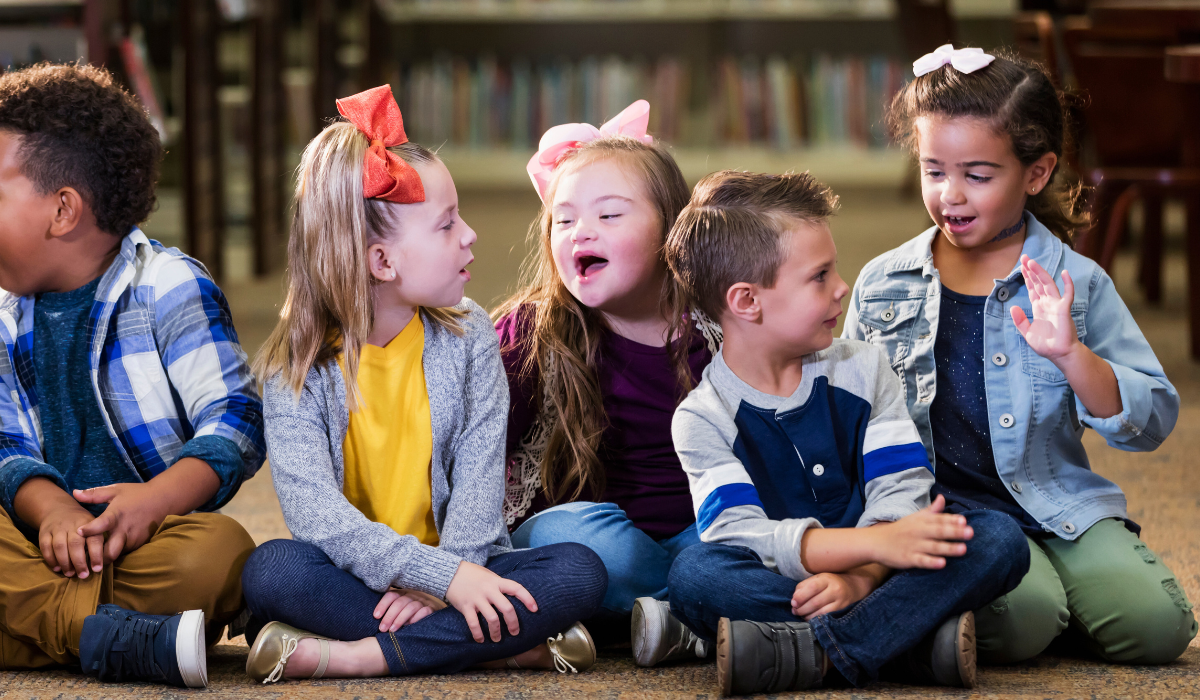Down syndrome, also called Trisomy 21, is a genetic variation in which an individual has three copies of chromosome 21 instead of two. This extra genetic material can cause a number of physical changes and a range of delays in cognitive and language development. The degree of these challenges and delays varies between individuals.
What are some of the common characteristics of Down Syndrome?
- Slanting eyes with folds on inside corner
- Poor muscle tone
- Increased flexibility in the joints
- Distinctive physical appearance
- Health-related issues such as visual problems, mild to moderate hearing loss, speech difficulty and heart defects.
- Cognitive delays
How common is Down Syndrome?
Down Syndrome is the most common chromosomal variation in the world found in people of all races, ethnic and economic groups. In the United States about 6,000 babies a year (about 1 in 700) are born with Down Syndrome.
What help is there for babies and toddlers?
The Individuals with Disabilities Education Act (IDEA), our national special education law requires every state to offer a system of supports and services to families of infants and toddlers with disabilities from birth to age three. This system of support and services is called early intervention. Your involvement as a family in the process of evaluation and support to help your child is very important. The most important first step is to welcome your baby to your family and get to know your baby beyond the label of Down Syndrome.
- The National Down Syndrome Congress has an New and Expectant Parent Guide that is excellent.
What do I need to think about for my child’s IEP?
Children with Down Syndrome are eligible for special education and related services under IDEA. IDEA requires the development of an Individualized Education Program (IEP). The IEP is a process that results in a document, the IEP, which guides the student’s education and is based on a good evaluation. Based on the results of the evaluation, parents and educators work together to make an educational plan that provides supports, services, accommodations and modifications that fit the individual student with Down Syndrome. These support and services are designed to help the student learn the general education curriculum within the general education environment along with other students with and without disabilities.
The educational plan for each student should be individualized and address the students’ needs in all areas: academic, social and adaptive, communication, as well as gross and fine motor development. All students have strengths and these should be built upon as well. Insuring consideration of these strengths is just one important contribution parents make to the educational planning team. Within the overall context of individualization, and recognizing the uniqueness of each student, there are some tips that can serve as a guide to making the learning environment best for the student with Down Syndrome. An individualized education plan is a key process for middle and high school students as well. Visit our website for more information on the IEP process.
- DSNMC Education Guide (download) TECHNIQUES FOR SUCCESS EDUCATION RESOURCE GUIDE- Strategies, tips, and considerations for the education of a student with Down Syndrome.
Is there technology that can help my child?
Assistive technology is a related service listed in IDEA. Technology is a key to leveling the playing field for individuals with disabilities. Learn more on our Assistive Technology webpage.
Where can I find support?
- Capital Area Down Syndrome Association
- National Down Syndrome Society Helpline 1-800-221-4602
- National Down Syndrome Society Michigan Affiliates
- Down Syndrome Association of West Michigan
- Down Syndrome Guild of Southeast Michigan
- Gigi’s Playhouse Detroit


